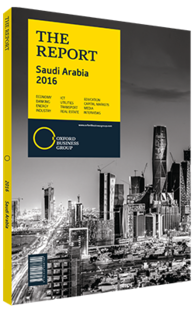A changing marketplace finds Saudi Arabia developing speciality industrial products
Saudi Arabia has long been reliant on the upstream petrochemicals industry, but the Kingdom is accelerating efforts to diversify its economy and has some clear sector-specific industries it is looking to develop. Plastics, fertilisers, mining and metals are particularly attractive, and a strong push is likely to come in the near future in the automotive industry (see analysis).
Downstream Of Downstream
The most attractive opportunities remain in industries that operate downstream from the petrochemicals sector. “Local petrochemical producers comply with the highest international standards,” Said Bajodah, executive president of S-Chem, a Chevron Phillips joint venture (JV) with Saudi Industrial Investment Group and Petrochem, told OBG. “If we go further downstream we will do it at the same high standards, producing a premium product which could be marketed domestically or exported to sophisticated markets in Europe, the US or even Asia.”
According to Philippe Ducom, chairman, CEO and president of ExxonMobil Saudi Arabia, the trend is towards larger quantities of smaller investments and speciality products. “There is clearly significant growth potential for specialty products,” he told OBG. “The Kingdom is trying to facilitate investment downstream of downstream. They are developing clusters and attracting more layers of industry. We are seeing smaller, focused companies. Fewer big projects of $1bn, but many more of $10m, $50m and $100m.”
Rubber
One of the most immediate pushes is in the rubber industry. In December 2015 it was announced that ExxonMobil Chemical and Saudi Basic Industries Corporation (SABIC) were extending their Al-Jubail Petrochemical Company JV into the rubber industry, with commissioning to start on a new $3.4bn elastomers facility – the first synthetic rubber plant in Saudi Arabia. Once up and running, the facility will be able to produce more than 400,000 tonnes of rubber per year, as well as thermoplastic speciality polymers and carbon black. The two companies have also set up a jointly funded High Institute for Elastomer Industries to help train Saudi technicians in order to develop the elastomers conversion industry, with the first class graduating in 2015. “It’s a good fit for both of us,” John Verity, senior vice-president of polymers at ExxonMobil Chemical, told media when the Al-Jubail announcement was made. “For SABIC, it gave them the opportunity to build and champion a first-rate rubber industry in Saudi Arabia, supporting job creation, developing downstream industries and helping diversify the national economy. From an ExxonMobil perspective, it gave us a number of growth opportunities for some of the existing products that we are in that we could bring to the JV.”
Chemicals
In addition to the growth of the rubber industry, the Kingdom is developing its chemical production capacity. Sadara Chemical Company, a JV between Saudi Aramco and US-based Dow Chemical, is nearing completion on an integrated chemical complex that will have 26 different manufacturing units at a cost of around $20bn. The complex is the first in the Middle East to feature a naphtha cracker, and is expected to boost the number of jobs and businesses in the specialty chemical segment. In addition, in June 2016 it was announced that Saudi Aramco and SABIC had agreed to conduct a feasibility study related to the development of a fully integrated crude oil-to-chemicals complex.
Opportunities Ahead
Industry players continue to point to the strong opportunities for Saudi manufacturers that look to target the Kingdom’s 30m domestic consumers. “Saudi Arabia’s greatest competitive advantage is the size of its market. Currently, 70% of all manufactured products used in the Kingdom are imported, so there is a great deal of growth potential just for those looking to serve the Saudi market,” Bandar Al Samaani, CEO of the Saudi-based manufacturing firm Al Samaani, told OBG.
You have reached the limit of premium articles you can view for free.
Choose from the options below to purchase print or digital editions of our Reports. You can also purchase a website subscription giving you unlimited access to all of our Reports online for 12 months.
If you have already purchased this Report or have a website subscription, please login to continue.

